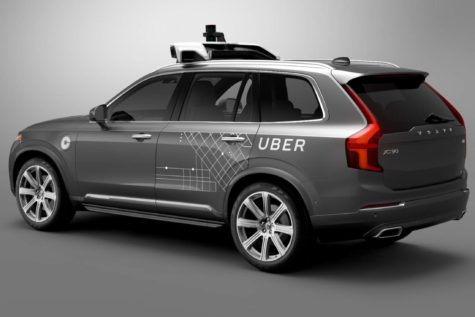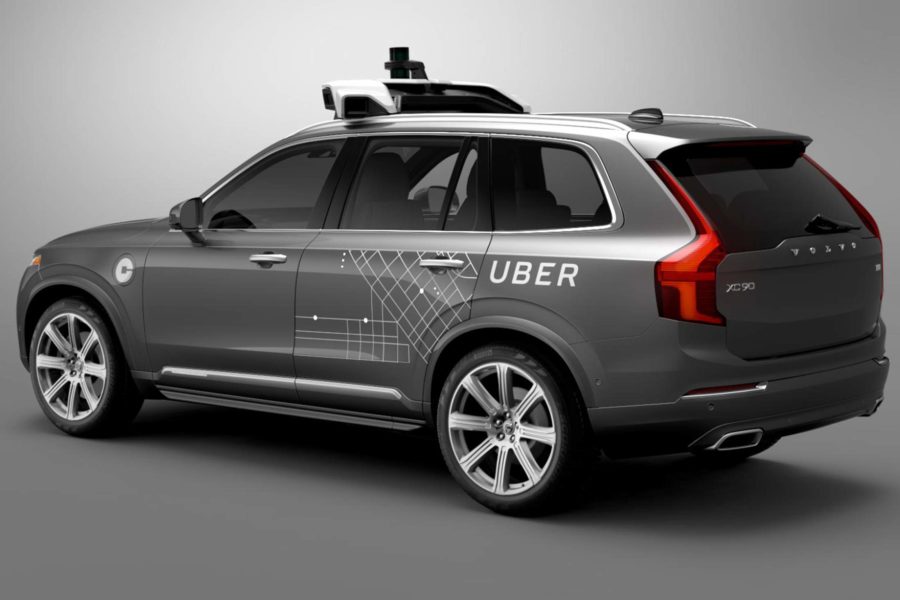The transportation of the future: Uber’s self driving cars

In 2011, Uber launched a revolutionary new service. Not only does it offer those looking to save a dollar on transportation a way to get around the city for cheap, but it is also a way for people with a couple of extra hours in their day to gain an additional source of income.
Now, Uber is taking another giant step forward in the world of transportation. In December, Uber launched its self-driving car pilot program in San Francisco after testing the cars in Pittsburgh in September. Pennsylvania has few restrictions on autonomous vehicles, the primary one being that a human must be in the car to take over, if needed.
The California DMV promptly shut down the Uber’s plan because Uber did not have proper permits for autonomous vehicles, according to the New York Times, so the registrations of the 16 Volvo XC90s SUVs were revoked. Since then, the issues in California have been resolved.
In late February, the program once again popped up-this time in Tempe, Arizona. Using the app, people can request an Uber and a self-driving car just may come with two engineers in the front seats.
Arizona is bound to be a productive testbed for Uber due to the executive order signed by governor Doug Ducey to “undertake any necessary steps to support the testing and operation of self-driving vehicles on public roads within Arizona.”
Unfortunately, the program is currently suspended due to an accident.
The self-driving cars use artificial intelligence in order to constantly improve.
“They tried to code the cars using a ton of conditionals, but there were too many, and what if two of the conditionals happen at once?” explains Computer Science teacher Mr. Adam Lueken. Conditionals are statements such as “if (speed>speed limit)// car.slowDown();” Lueken explains that the car cannot do more than one of these at once using traditional coding, but artificial intelligence allows the cars to do multiple things at once.
This is why developers switched to artificial intelligence; it allows the cars to learn from their mistakes and then learn how to improve from it. For each mistake that a car makes, every single car in the fleet learns from that single mistake.
Uber’s self driving car technology is still in the works, but there have already been multiple accidents.
On March 25th, one of the Arizona cars ended up crashing as another car failed to stop for it, according to ABC Phoenix. While the crash was not the Uber car’s fault, it represents one shortcoming. In a normal car, a human could take evasive action if another car breaks a rule. Through the use of artificial intelligence, the self-driving cars may be able to learn how to take evasive action if another car does not do what it is expected to do. This accident caused the current suspension of the program.
In the San Francisco program, a car ran six red lights. This could indicate that there is an issue with a sensor in that car, but also a possibility that the error is due to an issue in the artificial intelligence, which would indicate the possibility of a more widespread issue.
Eventually, the cars will likely become nearly as safe as normal cars as bugs are corrected and as the artificial intelligence improved. Until then, there will continue to be accidents and errors. As long as they are not widespread and not causing significant injuries to others, states will likely allow Uber to continue to use their self driving cars.
The future of transportation lies within self driving cars. It will allow transportation companies to eliminate one of their two biggest expenses: labor. Eliminating labor for Uber would affect the 160,000 Americans who drive for them. People in the 53 other countries where Uber is also offered would lose a source of income. Two companies, Tesla and Otto, are also developing a self-driving truck. This would put about 3.5 million people who work as truck drivers out of work, according to the USA Today.
The threat of artificial intelligence to Americans is the biggest threat to labor since outsourcing and the development of basic robots.
“Artificial intelligence is going to be the next big thing regarding technology,” said Lueken.

